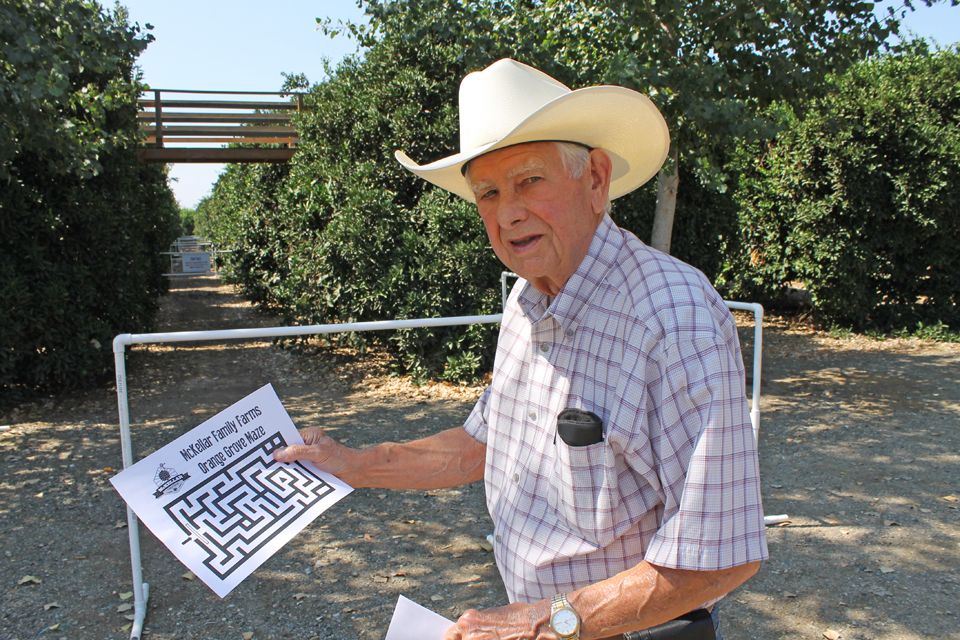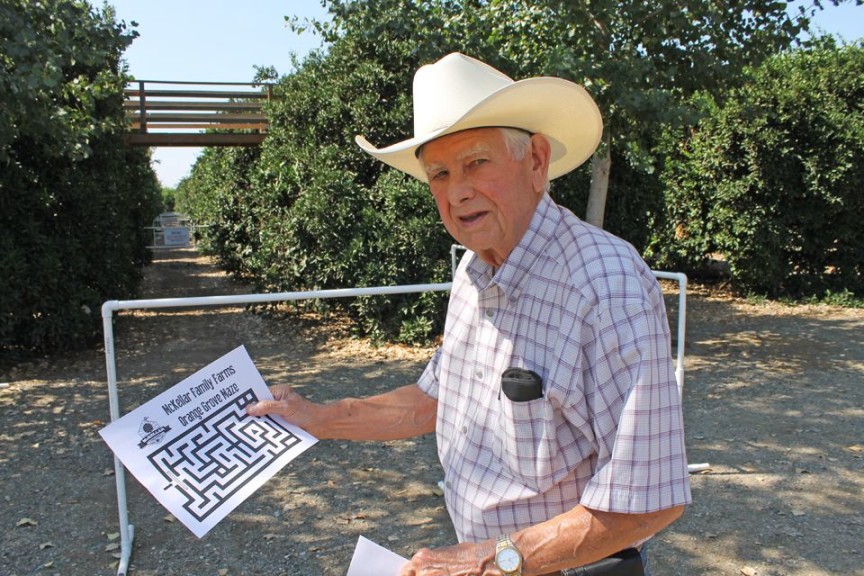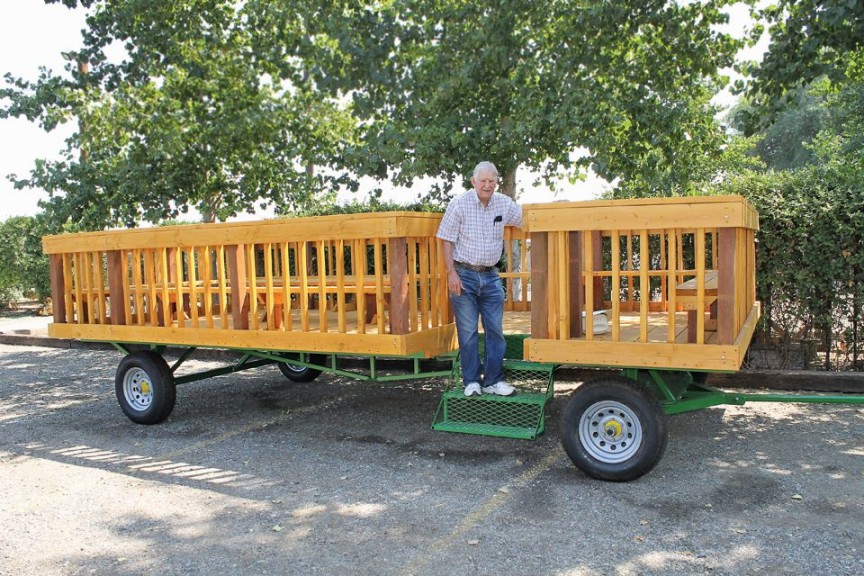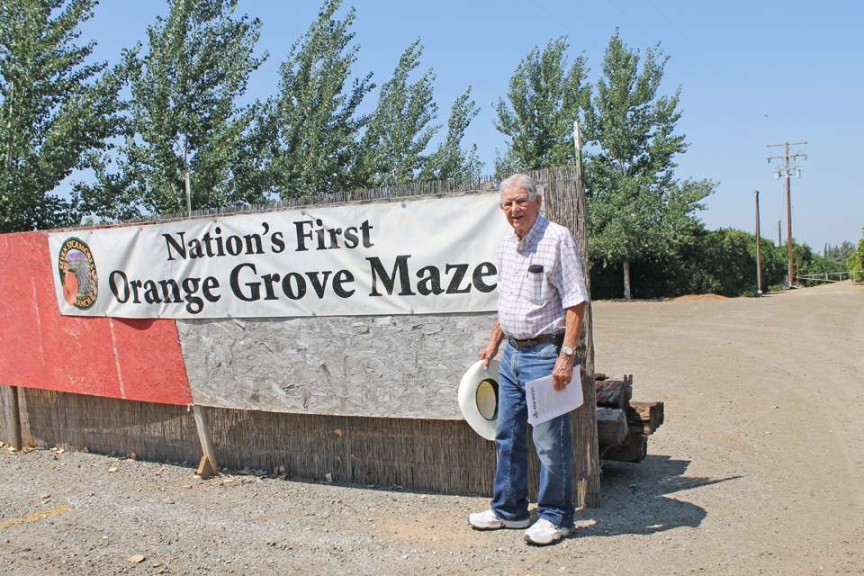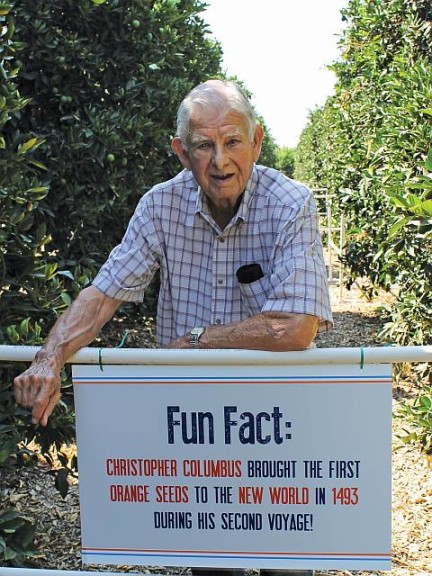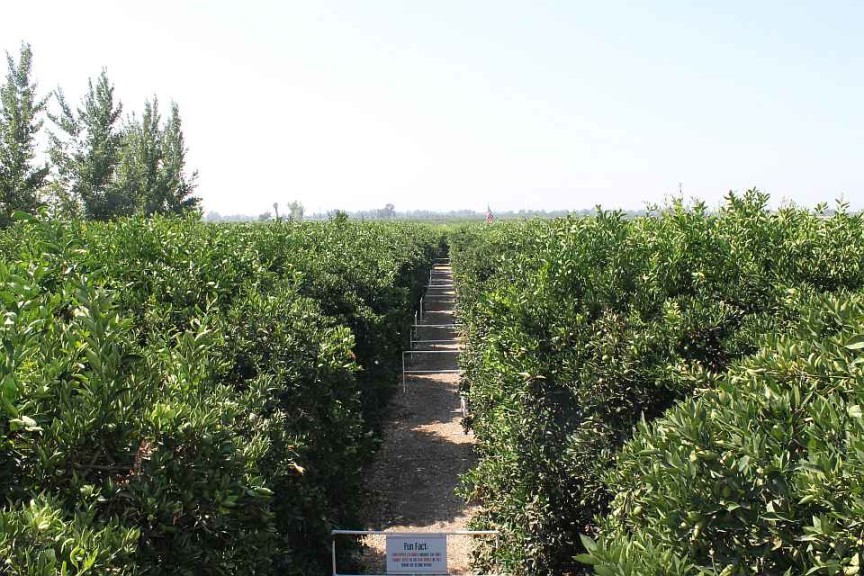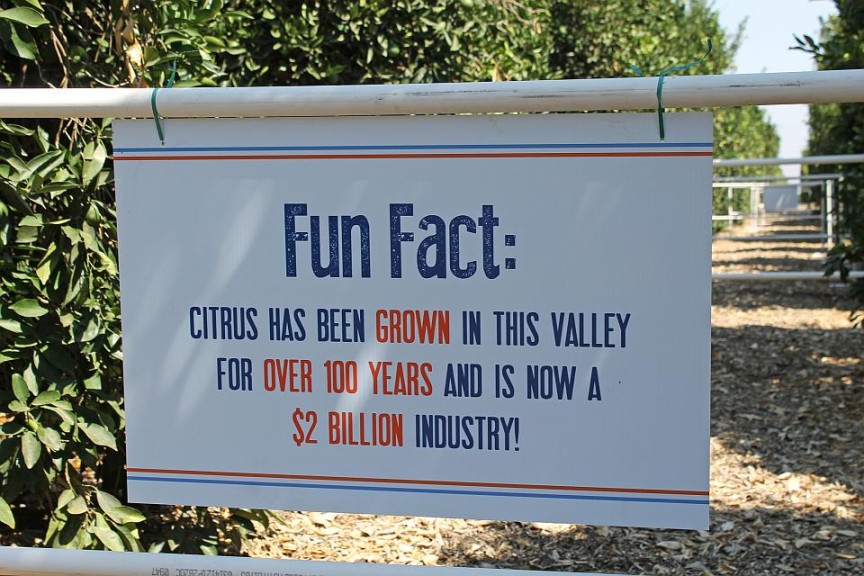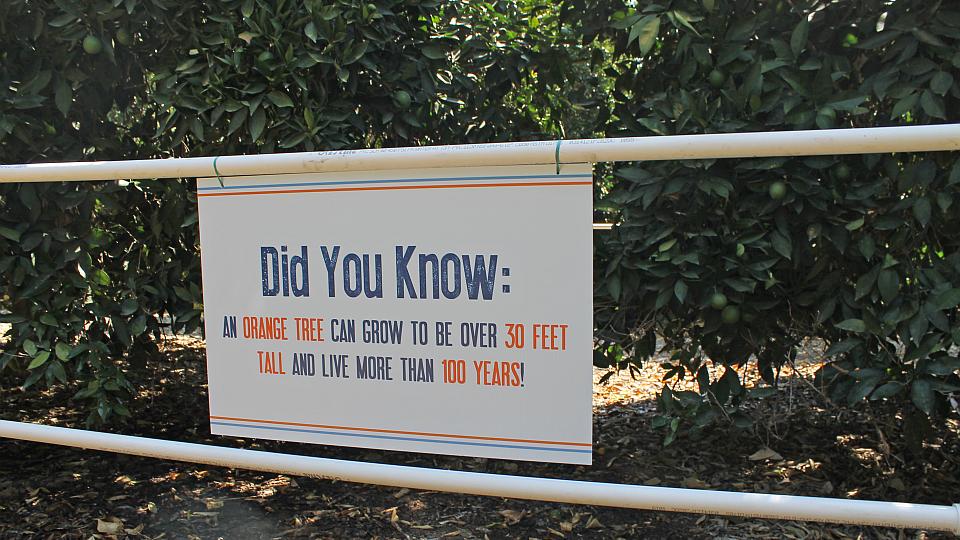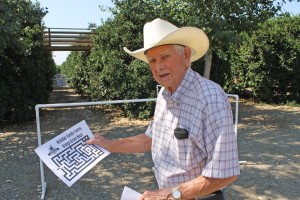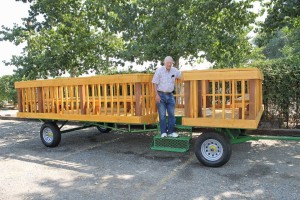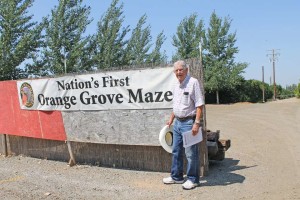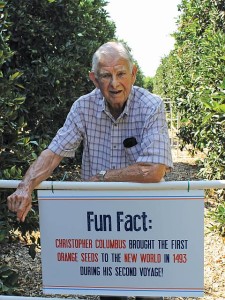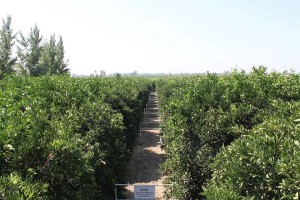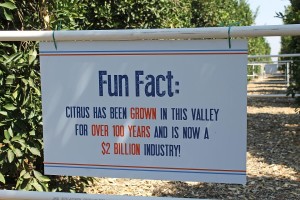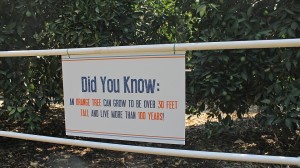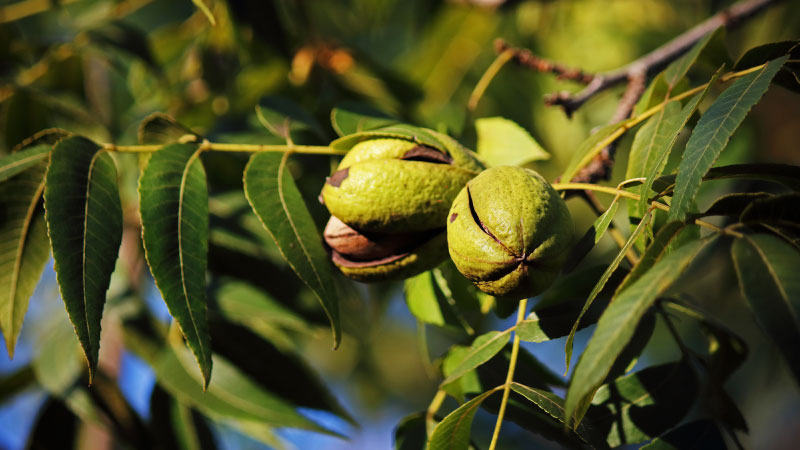Marketer Finds Niche With First-Of-Its-Kind Orange Maze
[blackoutgallery id=”64502″]
Every year when he attended the annual meeting of the North American Farmers’ Direct Marketing Association (NAFDMA), Bob McKellar would hear about corn mazes and what great agritourism magnets they made.
He was intrigued. McKellar’s an orange and Mandarin grower in Ivanhoe, CA, who has been successful using his farm for other purposes, such as hosting weddings. So successful, he no longer opens up his property on weekends to the public, as for much of the year, Saturday is Wedding Day at McKellar Family Farms.
But he remained interested in other forms of agritourism. McKellar actually studied journalism (and animal husbandry) in college at Cal Poly-San Luis Obispo from 1949-53, and had his own public relations firm in Oregon until his father died in 1972. He came back to the family farm to help out his mother, and with the aid of two 40-year employees, Virginia McKee and Jim Stailey, he has been there ever since.
Around the year 2000, they weren’t making that much money by growing oranges for wholesale, so McKellar started looking around for direct marketing opportunities. He kept coming back to the idea of creating the country’s first orange maze.
“I talked to three corn maze growers,” he recalls. “The first said he didn’t know, and the other two growers said I can’t do it.”
McKellar did it anyway. In fact, if anything he was a little too successful. His first effort, an 8-acre orange maze constructed five years ago, was just too big.
“It took people too long to do it; some would give up after an hour,” he says. “We thought, ‘We’re supposed to entertain people, not make them unhappy.’”
Try, Try Again
So McKellar built a new maze, though “built” isn’t exactly the right word. He arranged the maze — this time only 3.5 acres — in an established grove of Navel orange trees. Specifically, there are 319 trees, Early Atwood on Cleopatra Mandarin rootstock, planted in 1957. To better achieve the maze effect, he lets them grow out more than he normally would, not trimming them as much so as to get more vegetation. But it’s still a productive grove.
It’s important to realize that while McKellar clearly enjoys direct marketing, he is still a wholesale, 182-acre citrus grower, selling his fruit through the Sun Pacific packinghouse.
In fact, he sells 90% of his fruit wholesale. Half are navels, 30% Valencias, and the reminder are composed of two varieties of Mandarins, W. Murcotts sold as “Cuties,” and Shasta Gold, a University of California variety that’s too big to qualify as a “Cutie.”
Though the new maze is smaller and more manageable, everyone gets a map. You don’t have to use it, says McKellar, but if you get frustrated you can use it to get out.
On the back of the map there are lots of questions about oranges, like “How did Navel oranges get their name?” and “What are W. Murcott Mandarins known as in the grocery store?”
At the center of the maze there is an American flag to show people they have reached their goal.
Agrication
The maze is just one component of McKellar’s strategy. He plans a demonstration fruit orchard with many different crops, and likewise, a huge vegetable garden.
“So people can come and see what their food really looks like, and how it grows,” he says.
Because for McKellar, it’s not just about agritainment, it’s about agri-education.
For instance, in addition to the weddings — he’s up to about 70 per year at two different venues — he hosts lots of bus tours. Recent tour buses ferried groups from Germany, Ireland, and Canada.
He also grows for a Community Supported Agriculture (CSA) venture along with other farmers in the area. Initially, he was going to do it himself.
“But nobody would want a basket with nothing but oranges,” he says with a big smile.
So in 2005 he handed out letters to the growers selling their crops at the Visalia Farmers Market inviting them to join. Eight agreed, and nearly a decade later, seven of them are still doing it. They serve about 150 customers, charging from $30 to $50 per week, including everything in the boxes from rutabagas to squash, kale to kohlrabi. Sometimes even an orange or two.
Networking
The CSA was the first idea McKellar got at NAFDMA, but it likely won’t be the last. He attends the main annual meeting every year to get ideas and mingle with his fellow farming entrepreneurs. (The next meeting, the 30th annual NAFDMA Convention, will be held Feb. 1-6, in Nashville and Knoxville, TN.)
This year at the NAFDMA Advanced Learning Retreat in Erie, CO, which is mostly for those who already know the basics, McKellar liked the hayride wagon he saw. So he got a description and pictures, and this year he’s been taking people for rides in his fancy new wagon.
“I’ve gotten almost all of my ideas from NAFDMA,” he says.
Not that he’s always gotten an encouraging word. He says Jane Eckert, who frequently lectures on agritainment, once told him he was too old and with no kids he would have no one to help him.
“I remind her of that ever so often,” he says, chuckling, quickly adding he doesn’t hold it against her. “She even did our websites.”




